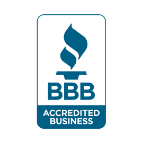Tree roots are drawn to water sources underground, making sewer lines an irresistible target. Even the tiniest crack or loose joint in a pipe can…
Read More >
Your sewer line is responsible for transporting wastewater away from your house and keeping your living space sanitary and free from unpleasant odors. When this…
Read More >
From the moment you flush the toilet or run water down your sink, your sewer lines are hard at work handling all kinds of waste.…
Read More >








